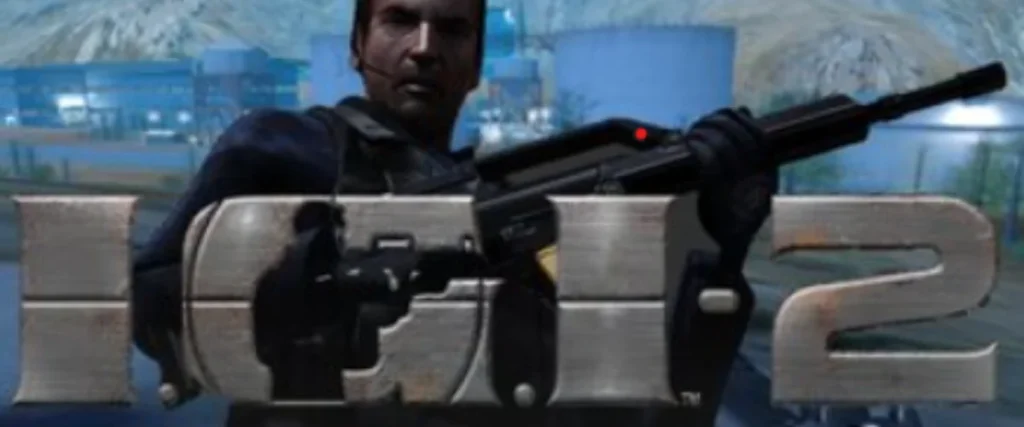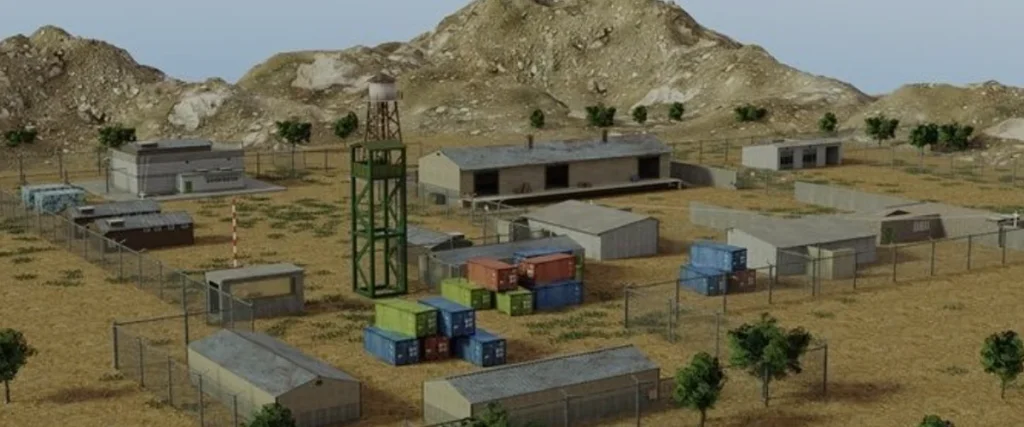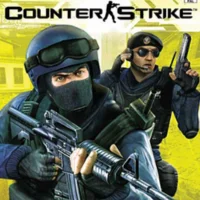Project IGI Game: A Deep Dive into the Tactical Shooter Classic
Just Now
85 MB
V1.6
Android 5+
34K+
Description

Introduction
In the early 2000s, when the gaming industry was evolving rapidly with the introduction of 3D environments and story-based missions, a game surfaced that redefined tactical espionage and stealth-based gameplay. That game was Project I.G.I. (I’m Going In). Developed by Innerloop Studios and published by Eidos Interactive, Project IGI was released in December 2000. Despite lacking some features found in later tactical games, it still holds a nostalgic and iconic status among fans of the stealth and FPS genres.
This article will provide an in-depth look at the gameplay mechanics, storyline, level design, AI system, weapons, pros and cons, and how Project IGI left a mark on the gaming world.
Game Overview
Title: Project I.G.I. (I’m Going In)
Developer: Innerloop Studios
Publisher: Eidos Interactive
Platform: Microsoft Windows
Release Date: December 8, 2000
Genre: Tactical Shooter, First-Person Shooter
Mode: Single-player
Project IGI was one of the earliest games to blend first-person shooting with stealth tactics in a military context. It aimed to simulate real-world tactical operations and presented players with open-ended levels that encouraged strategy and precision.
Plot and Storyline
The story follows David Llewellyn Jones, a former British SAS operative, who is now working with the CIA. David is sent to recover a stolen nuclear warhead and uncover a conspiracy involving former Russian military officers and rogue states. The storyline spans several missions across Eastern Europe, uncovering betrayals and a deeply rooted arms trade network.
Each mission unfolds a piece of the puzzle, requiring players to infiltrate military bases, steal intelligence, disable communication networks, and face off against increasingly difficult enemies.
Gameplay Mechanics
Project IGI’s gameplay emphasized realism and strategic planning over chaotic gunfights. Here’s a breakdown of the core mechanics:
Mission-Based Progression
The game is structured around 14 increasingly difficult missions, each with multiple objectives. Players often start from outside the target zone and must navigate through enemy territory using stealth or combat.
Stealth over Aggression
Unlike many FPS games of its time, IGI rewards stealth. Running into an enemy base guns blazing often results in death. Using shadows, avoiding security cameras, silencing guards, and disabling alarm systems is often more effective.
No In-Game Save System
One of the most controversial features was the lack of mid-mission save points, making it essential for players to plan their moves and memorize enemy patrol patterns. This significantly increased tension but also frustration.
Artificial Intelligence (AI)
The enemy AI was advanced for its time. Guards followed patrol routes, reacted to sounds, communicated when they spotted the player, and even sounded alarms to call reinforcements. Although not perfect, it created a believable and challenging environment. Once the alarm was triggered, the entire mission could become exponentially harder.
Weaponry and Equipment
Project IGI offers a variety of real-world inspired weapons and gadgets, many of which are used by actual military and intelligence agencies.
Weapons
Glock 17: Silent and reliable for close combat
Desert Eagle: High damage, loud, not suitable for stealth
MP5 SD3: Silenced submachine gun, perfect for silent takedowns
AK-47: Widely used, powerful but noisy
Dragunov SVD: Excellent sniper rifle with a scope
M16A2: Balanced automatic rifle
Equipment
Binoculars: For scouting from a distance
Map Computer: Displays mission layout and objective markers
Lock Picks and C4 Explosives: Used for sabotage and entry
The game requires careful selection and usage of weapons depending on the situation. For instance, a silenced MP5 is perfect for infiltrating quietly, while the Dragunov is best for eliminating enemies from long range.

Level Design
Each mission in IGI was set in vast, open-ended environments with realistic terrain including mountains, forests, and military compounds. The game avoided corridor-style gameplay and encouraged exploration and tactical planning. Many missions featured multiple entry points, allowing players to decide how they approached the objective.
Notable levels include:
Trainyard: A complex mission involving the retrieval of intelligence documents
Radar Base: Disable communications without triggering alarms
Nuclear Infiltration: One of the toughest levels, involving the stealthiest gameplay and precise planning
Graphics and Sound
At the time of its release, IGI used a modified engine from Joint Strike Fighter, another title by Innerloop. The engine allowed for massive outdoor environments and line-of-sight rendering, which added to the realism.
Visuals
Natural lighting and weather effects
Realistic weapon models and animations
Detailed landscapes with terrain elevation
Audio Design
Tense background music that adapts based on enemy awareness
Realistic gunshot and environmental sounds
Radio chatter and voiceovers that enhance immersion
Technical Features
Despite its dated release, IGI boasted several cutting-edge features:
Dynamic AI Responses: Enemy units reacted differently based on player actions
Non-linear Approach: Missions could be completed in various ways
Zoom Capabilities: Sniper scopes and binoculars added a tactical layer
Realistic Ballistics: Bullet drop and weapon sway added to realism
Strengths of Project IGI
Tactical Depth
IGI’s biggest strength was its strategic gameplay. It wasn’t a run-and-gun experience. Every action had consequences, and each mission required a tailored approach.
Realism
The lack of health packs, absence of in-game saves, and realistic enemy behavior forced players to think like real operatives.
Level Design
The massive, open-ended maps allowed multiple infiltration routes and supported various play styles.
Criticisms and Limitations
Despite its innovation, Project IGI had its fair share of criticisms.
No In-Mission Save
This made the game extremely difficult and frustrating, especially for casual players.
Lack of Multiplayer Mode
The game was strictly single-player. A co-op or competitive mode could have increased replayability.
Weak Story Presentation
While the narrative existed, it lacked depth and emotional engagement. Cutscenes were minimal and the protagonist’s personality was underdeveloped.
No Health Recovery
Unlike most modern games, once the player took damage, it was permanent for the mission. This made stealth mandatory and left little room for error.
Legacy and Influence
Though not a commercial blockbuster, Project IGI developed a cult following. It influenced later tactical shooters such as:
Tom Clancy’s Splinter Cell
Hitman Series
Metal Gear Solid (Western adaptations)
Its emphasis on realism and planning contributed to a new sub-genre of stealth-based shooters. Even two decades later, many fans remember IGI as one of the most intense and innovative shooters of its time.
Sequel and Fanbase
In 2003, the sequel Project IGI 2: Covert Strike was released. It improved on several flaws of the original, such as adding in-mission save points, better AI, enhanced graphics, and a deeper storyline. However, it still couldn’t match the nostalgic experience the original provided.
In recent years, there has been talk of a reboot titled “I.G.I. Origins“, planned to be a prequel showing David Jones’s earlier missions. The trailer and developer updates suggest a modernized experience with advanced graphics, immersive storytelling, and gameplay refinement while retaining the tactical core.
Fun Facts and Trivia
The game had no official modding tools, but fans still created mods, weapon packs, and graphics overhauls.
The voice acting for David Jones was minimal, adding to his “mysterious agent” persona.
Due to its realistic environment and Eastern European setting, the game was banned in some countries over security concerns.
Conclusion
Project IGI was more than just a shooter. It was a trailblazer in blending stealth, realism, and tactical decision-making. While it had flaws, its innovation and difficulty curve made it a memorable experience. For gamers who enjoy planning every step, using stealth over brute force, and thriving under pressure, Project IGI remains a timeless classic.
Its legacy lives on not just through sequels and reboots but through the memories of players who once guided David Jones through enemy territory with nothing but a silenced pistol, a map, and a whole lot of patience.
(FAQs) about Project IGI
What does IGI stand for?
IGI stands for “I’m Going In”, which reflects the game’s central theme of infiltration and solo missions behind enemy lines.
Is Project IGI a real military simulation?
While Project IGI is inspired by real military operations and uses realistic weapons and tactics, it is not an actual simulation. It’s a tactical first-person shooter game designed for entertainment, not for military training.
Can you save progress during a mission in Project IGI?
No, the original Project IGI (2000) does not allow saving during missions. Players must complete each mission in one go, which increases the difficulty and tension. This feature was criticized but also praised for adding realism.
Is Project IGI multiplayer?
No, the original game is strictly single-player. There are no co-op or multiplayer modes. However, its sequel, IGI 2: Covert Strike, included limited multiplayer functionality.
What is the main gameplay focus of Project IGI?
The game focuses on stealth, strategy, and tactical shooting. Players are encouraged to avoid detection, disable security systems, and complete missions without triggering alarms or full-scale combat




